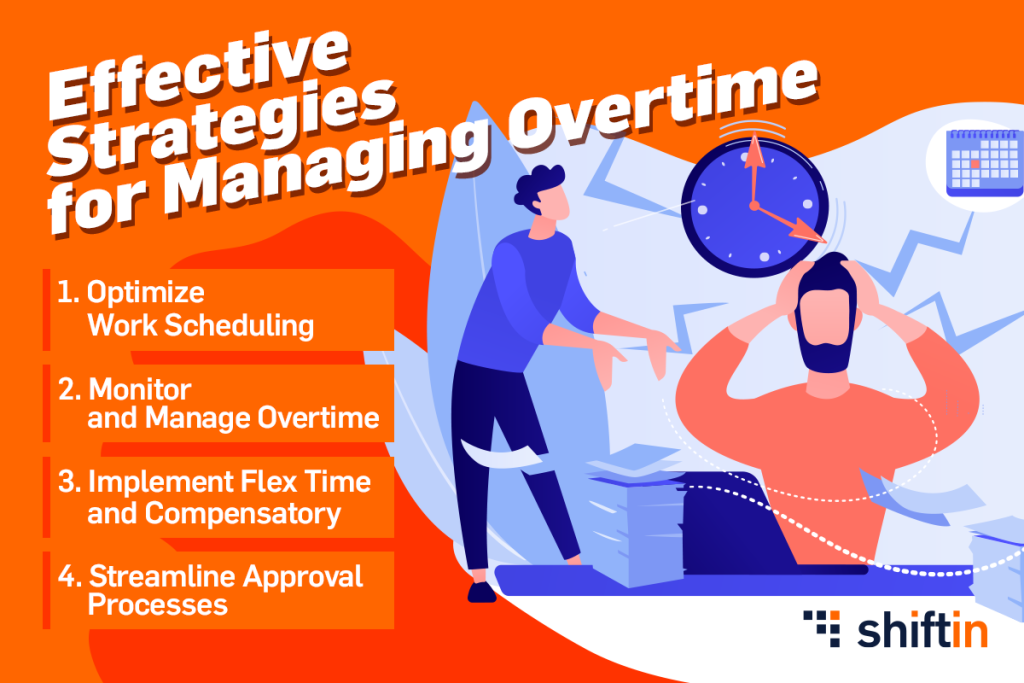- Analizează tendințele actuale de ore suplimentare
- Stabilește politici clare privind orele suplimentare
- Optimizează programarea muncii
- Monitorizează și gestionează orele suplimentare
- Implementează un program flexibil și timp liber compensatoriu
- Raționalizareaează procesele de aprobare
- shiftin
Orele suplimentare excesive nu numai că măresc costurile cu forța de muncă, dar pot duce și la epuizarea angajaților și la scăderea productivității. Pentru a menține un echilibru sănătos între viața profesională și cea privată a personalului, controlând în același timp cheltuielile, este esențial să implementezi eficient limitările privind orele suplimentare ale angajaților.
Analizează tendințele actuale de ore suplimentare
Înainte de a implementa orice strategie de limitare a orelor suplimentare, este esențial să analizezi modelele actuale de ore suplimentare ale organizației. Evaluează datele pentru a identifica departamentele sau rolurile de muncă cu cele mai multe ore suplimentare. Înțelegerea acestor tendințe îți va permite să vizezi domenii specifice pentru îmbunătățire și să iei decizii bazate pe date.
Stabilește politici clare privind orele suplimentare
Pentru a controla eficient orele suplimentare, trebuie stabilite și comunicate politici clare privind orele suplimentare. Aceste politici ar trebui să includă linii orientative pentru situațiile în care sunt permise orele suplimentare, procesul de solicitare a orelor suplimentare și fluxul de lucru pentru aprobare. Prin stabilirea așteptărilor, poți reduce numărul de ore suplimentare neautorizate și te poți asigura că angajații sunt conștienți de consecințele încălcării politicii.
Optimizează programarea muncii
O modalitate eficientă de a limita orele suplimentare ale angajaților este prin programarea eficientă a muncii. Luați în considerare utilizarea unui software de planificare pentru a crea programe de lucru optimizate. Acest software va ajuta la echilibrarea volumul de muncă, la alocarea resurselor în mod eficient și la reducerea la minimum a orele suplimentare prin potrivirea disponibilității angajaților cu cerințele volumului de muncă. Prin reducerea suprasolicitării sau lipsei de personal, se poate limita în cel mai ușor mod, nevoia de ore suplimentare.

Monitorizează și gestionează orele suplimentare
Implementează un sistem robust de monitorizare și gestionare pentru a gestiona transparent orele suplimentare. Aceast sistem software urmărește cu ușurintă orele suplimentare efective lucrate. Folosind un software cu caracteristicile de gestionare a orelor suplimentare precum Shiftin, poți identifica cu ușurință zonele în care ar putea fi necesară limitarea orelor suplimentare.
Implementează un program flexibil și timp liber compensatoriu
Oferirea de opțiuni de lucru flexibile, cum ar fi timpul compensatoriu sau programul de lucru flexibil, poate fi o strategie valoroasă pentru a reduce orele suplimentare. Angajații pot alege să își ia timp liber în loc să primească plata orelor suplimentare, contribuind astfel la un mai bun echilibru între viața profesională și cea privată, gestionând în același timp costurile cu forța de muncă.
Raționalizează procesele de aprobare
Prin folosirea unei soluții software de programare a turelor de lucru, precum shiftin, poți eficientiza procesul de aprobare a orelor suplimentare. Soluția software automatizează aprobările pe baza unor criterii predefinite și a unor fluxuri de lucru pentru a te asigura că orele suplimentare sunt autorizate doar atunci când se aliniază cu nevoile de afaceri și respectă legislația muncii.
Cum te putem ajuta?
Limitarea eficientă a orelor suplimentare ale angajaților este esențială atât pentru controlul costurilor, cât și pentru bunăstarea angajaților.
Spuneți la revedere orelor suplimentare excesive și salutați gestionarea raționalizată a forței de muncă cu shiftin.


